We use natural building methods at Red Beet Row to construct our agricultural-use buildings whenever possible. These methods are often lower cost, but much higher labor and time than contemporary construction methods in the United States today. There are many reasons the effort and time are worth it – sourcing materials locally supports the local economy, holding work parties to get loads of labor done at once builds community and brings people together, using natural materials reduces our exposure to toxins, the production processes for most building materials used in the US today are responsible for significant portions of water and air pollution – no one wants to live next to a chemical plant or cement factory (in fact, many are sick because of it and fighting for justice), and of course de-forestation (mostly due to agriculture) is the number one cause of climate change. Thus, we try to source our building materials from the trash (discarded pallets and skids) and from nature, using ancient technology proven to last.
Light Straw Clay Insulation
June and July 2021 we held 3 work parties to install “Light Straw Clay” insulation (abbreviated LSC) into our future root cellar with loft office/seed-storage space upstairs. LSC is straw tossed with clay water (called “slip”) and tamped into thick walls using temporary or permanent forms. There are buildings in Europe hundreds of years old with LSC insulation. Only 2 walls downstairs use LSC – one wall is shared with the greenhouse (in front of the new cellar/loft) and the other shared with a mud room entrance – unfinished in these pics. The other two walls are concrete block and have soil against them. All 4 walls of the upstairs loft are stuffed with LSC. We had 30 total volunteers help across each of those 3 work parties, stuffed walls for 10-14 total hours (across 2 days) at each party, and used 60 total bales of straw as well as countless gallons of water and clay soil we dug up from our clay-rich land.
If you are new to natural building (or to building in general), there is a LOT to learn before attempting your own project. Hopefully this page serves as a starting point for your continued education. Below see pictures of our LSC project, as well as links to more information – there is GREAT info on the internet teaching most of what you need to know (though not all! – contact us if you want to chat about natural building!)
LSC Resources
There is already great information online (thanks to experienced natural builders!) explaining most of the details of LSC insulation. Here are useful ones we used:
- Green Builder article about LSC
- Primer about LSC from a natural building school in KY
- Youtube video presentation from Lydia Doleman (in Asheville, NC) about LSC
- Podcast with Lydia Doleman about LSC
Clay Soil Plaster
The next step is to plaster the walls with a mixture of clay soil, sand, and fibers (chopped straw, hair, cattail tuffs, ruminate animal dung, and more can be used). More on this when we get to it!…
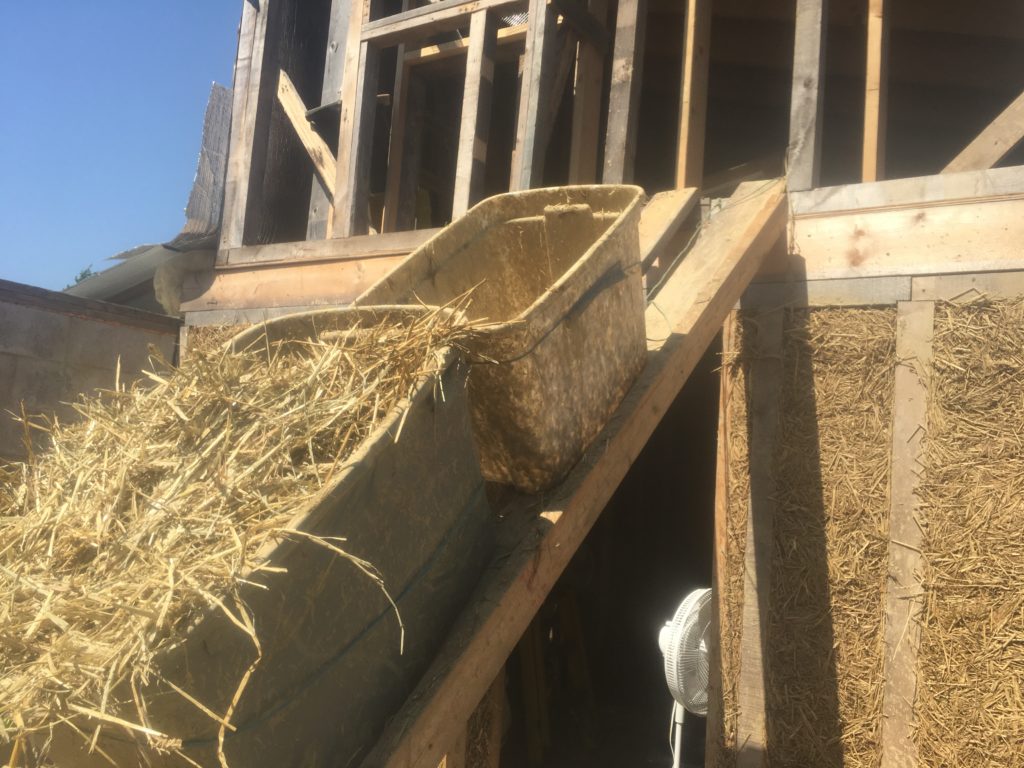
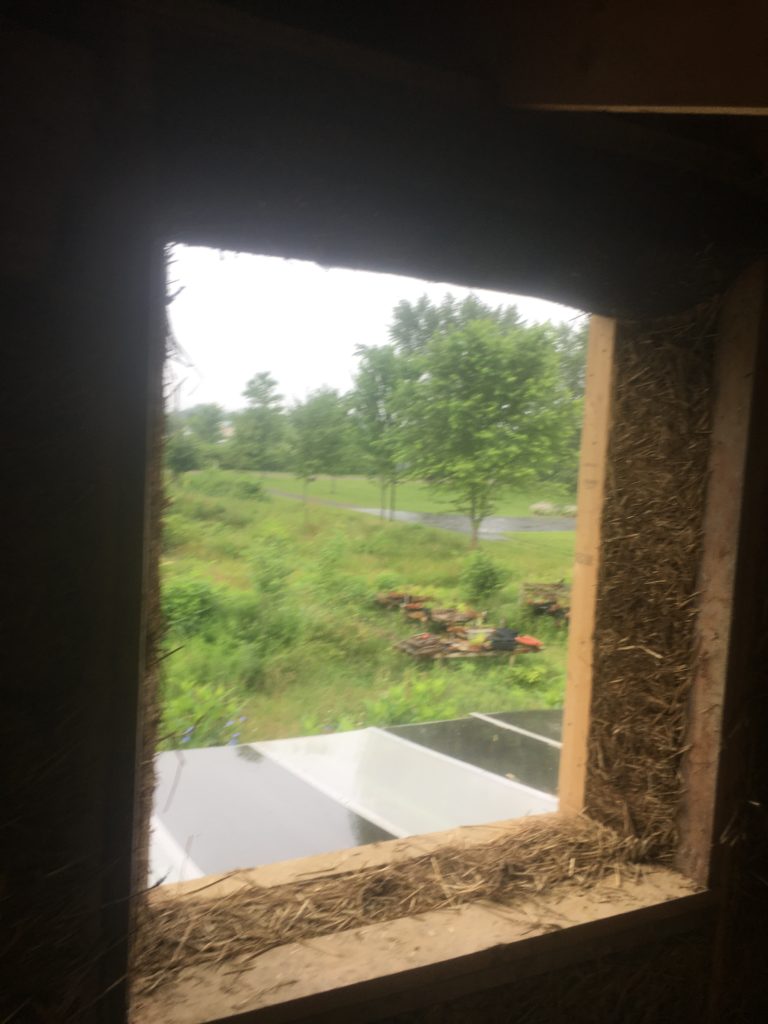
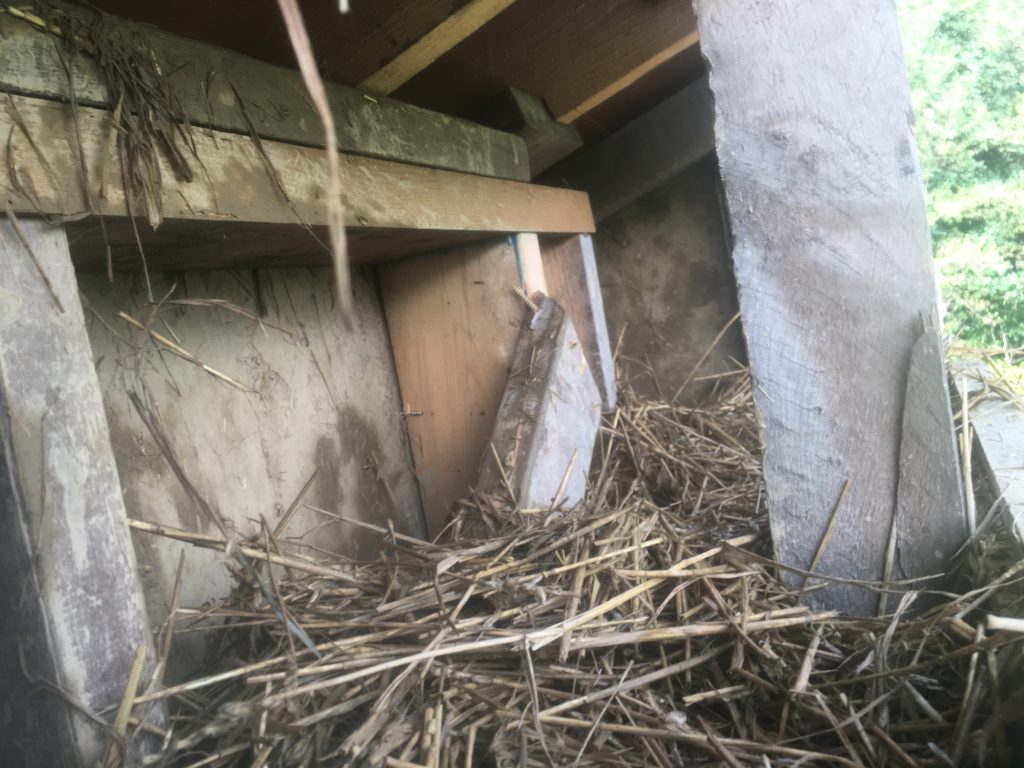
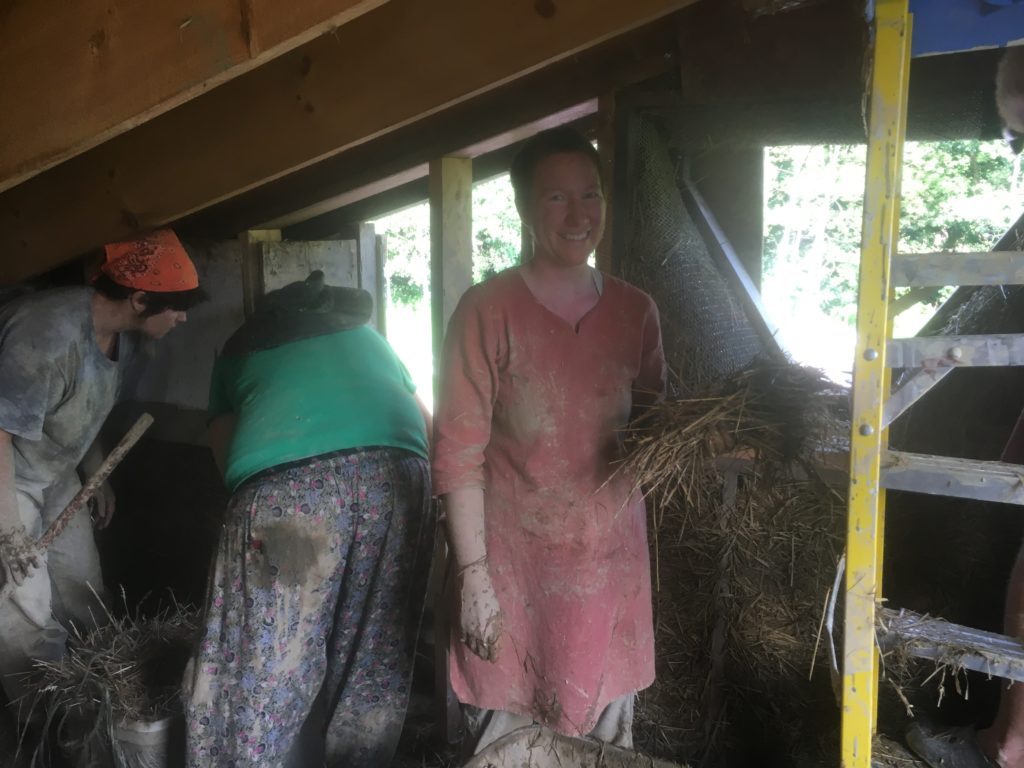

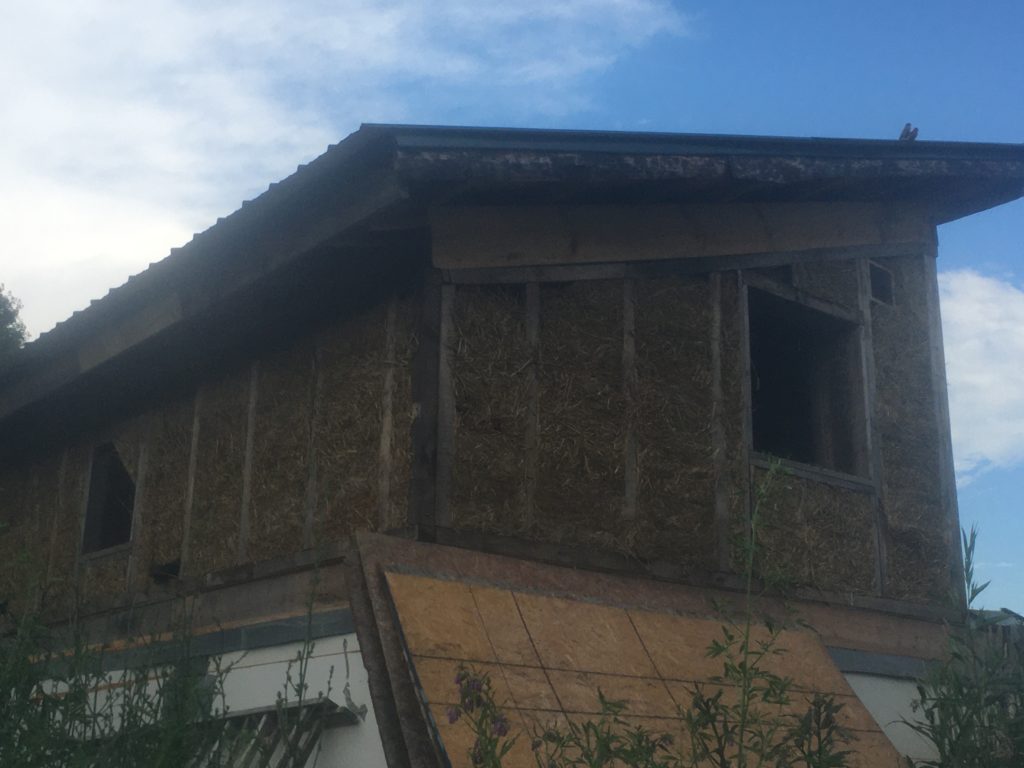
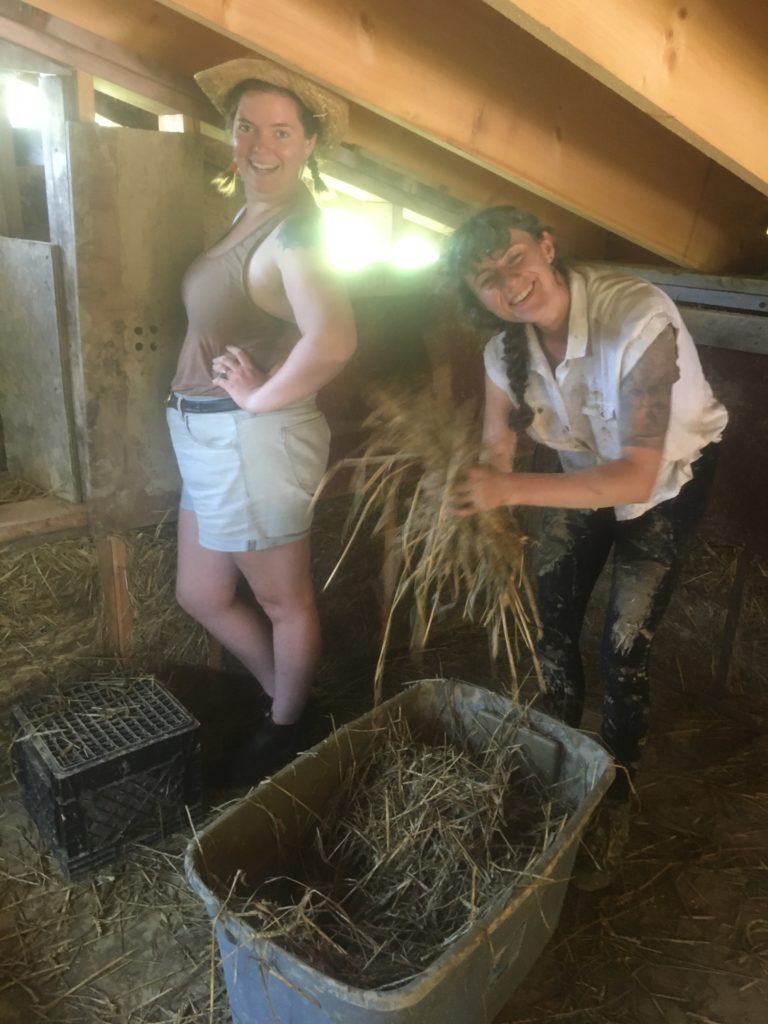
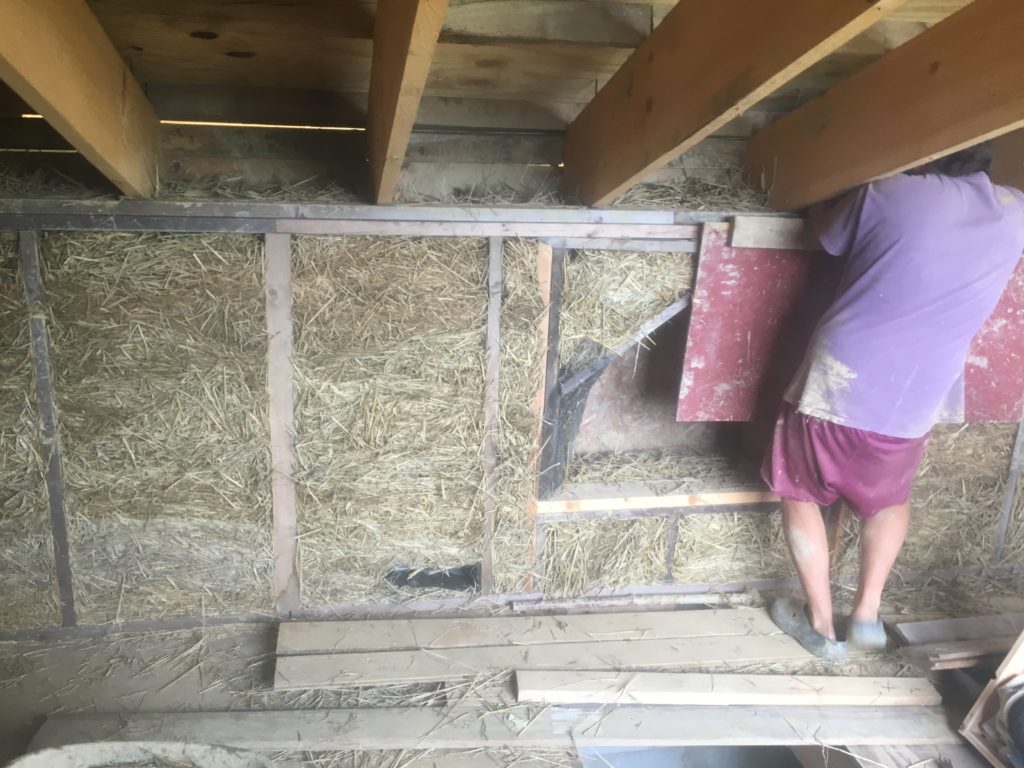
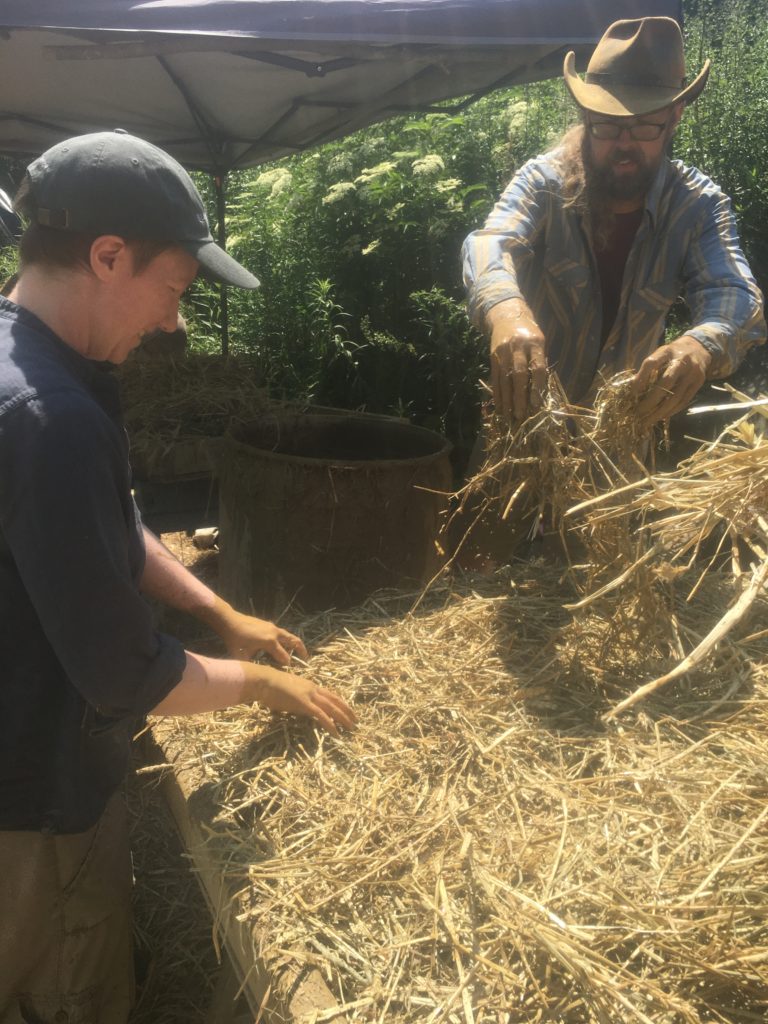
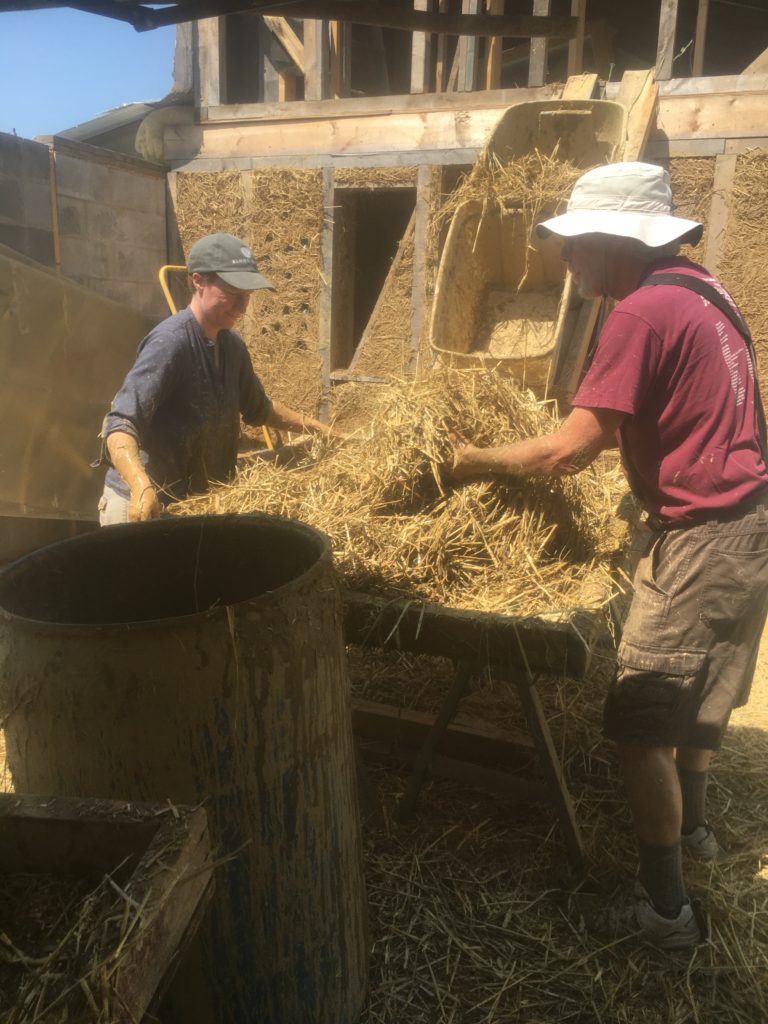
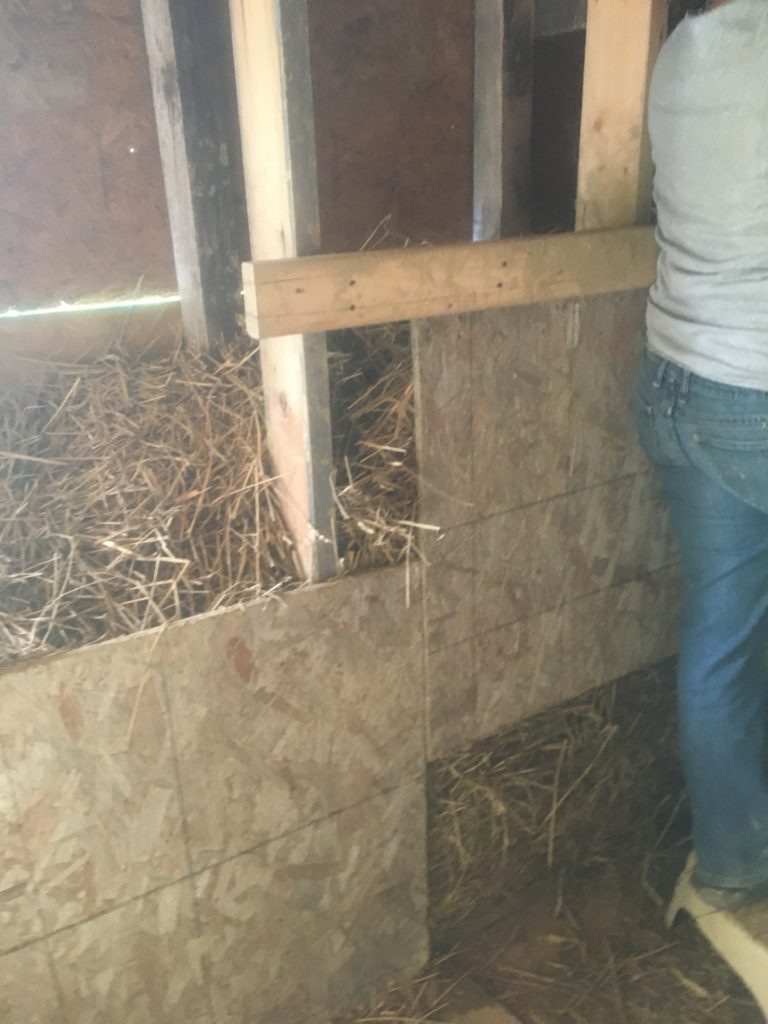
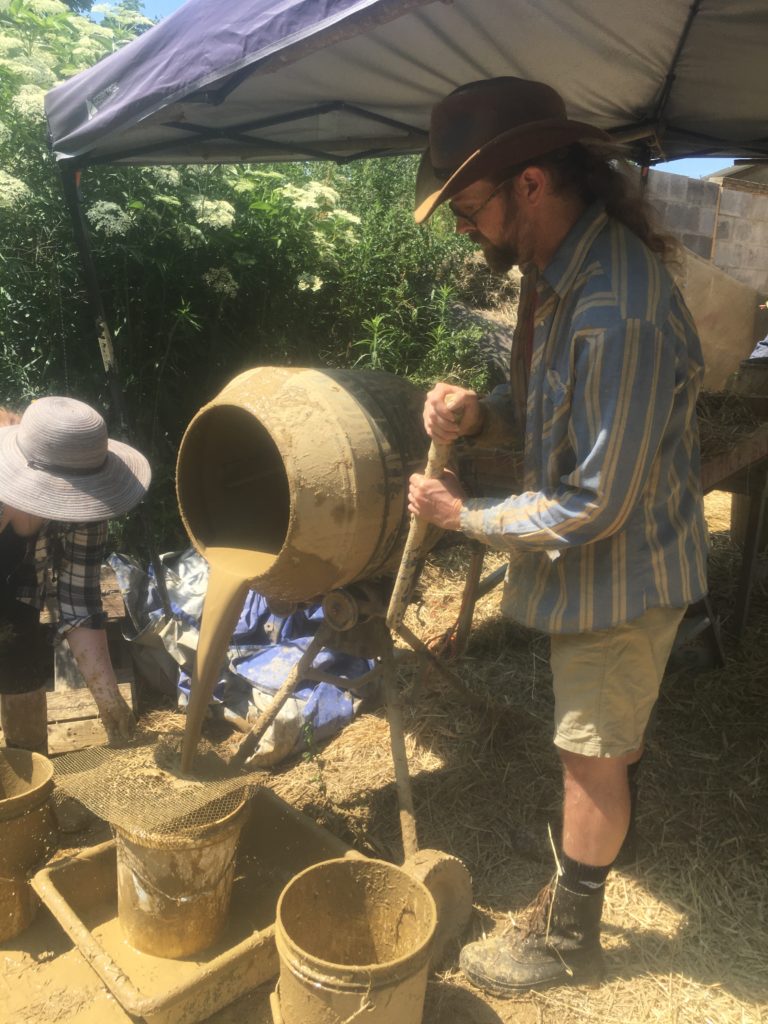

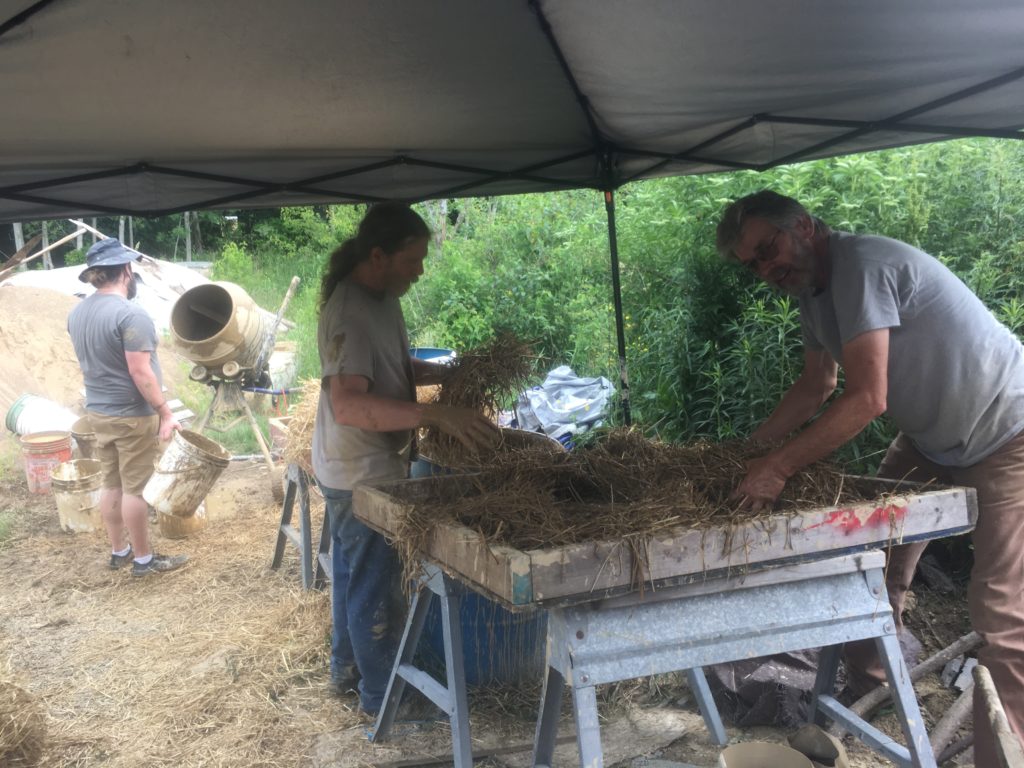
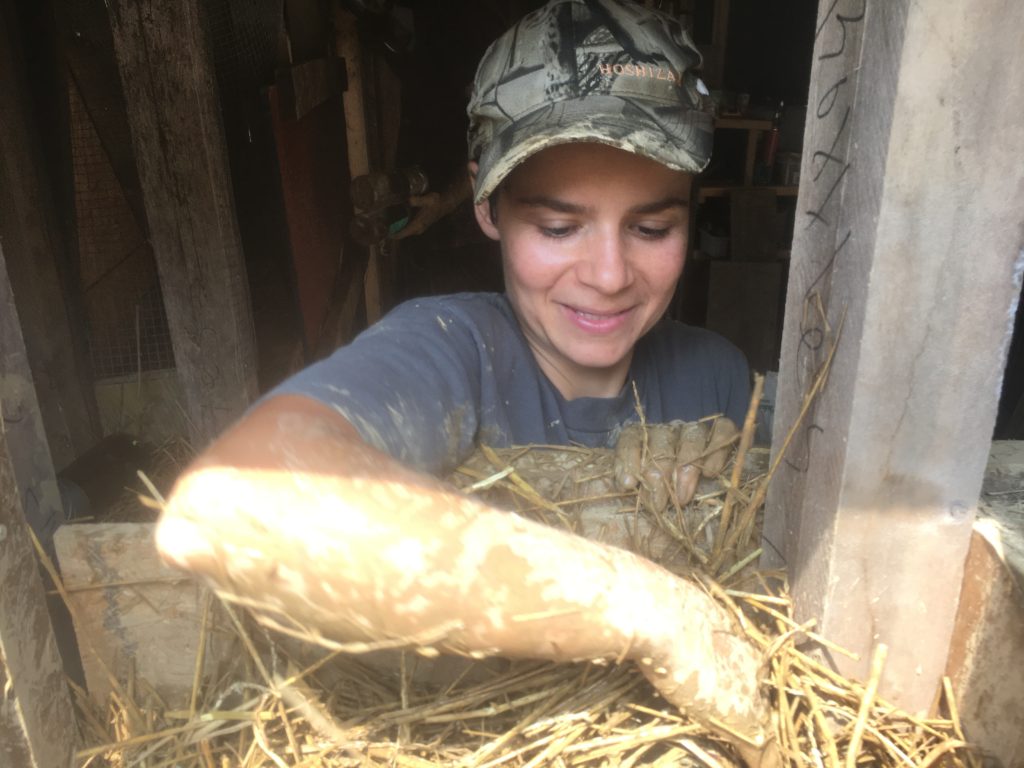

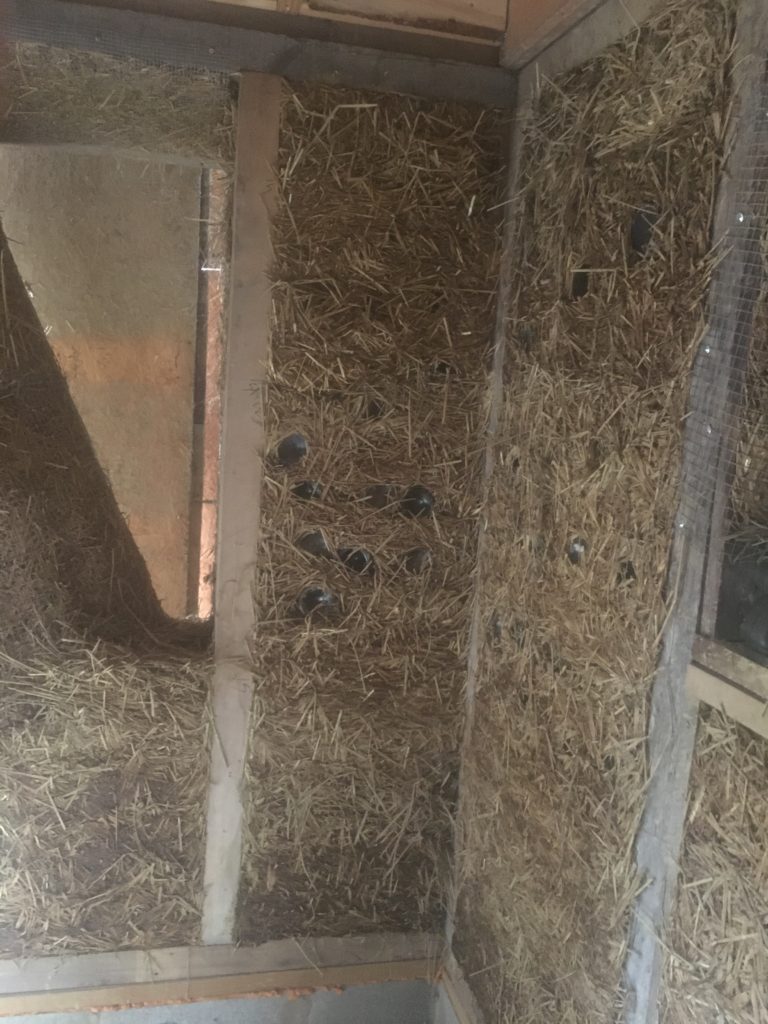
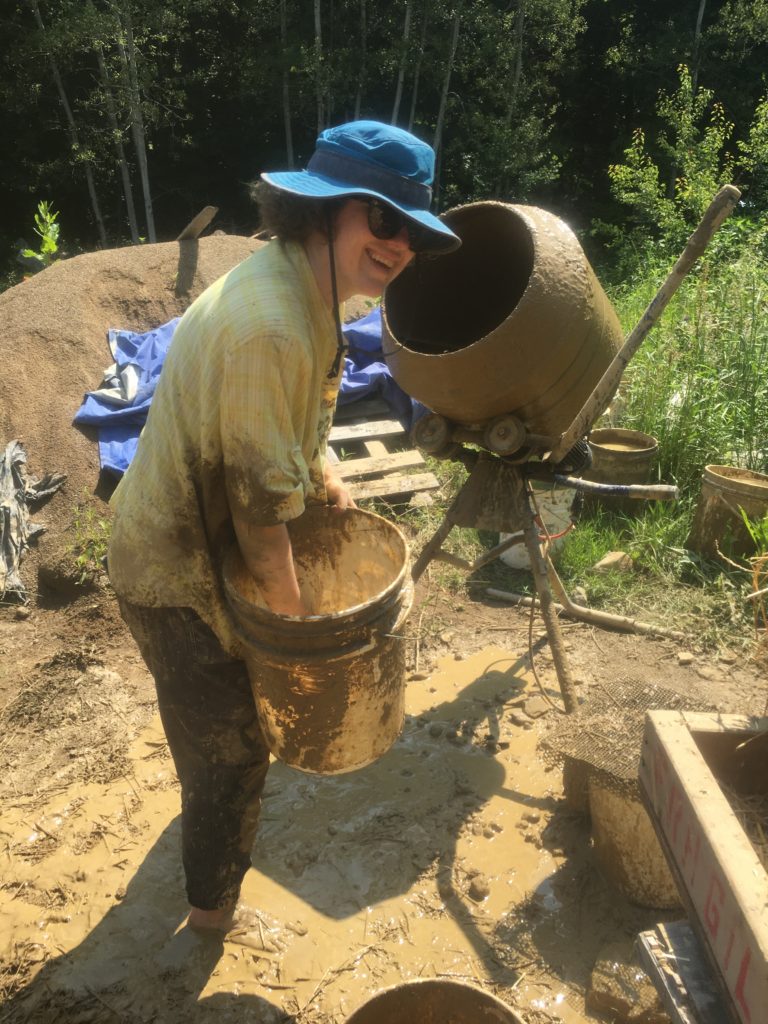
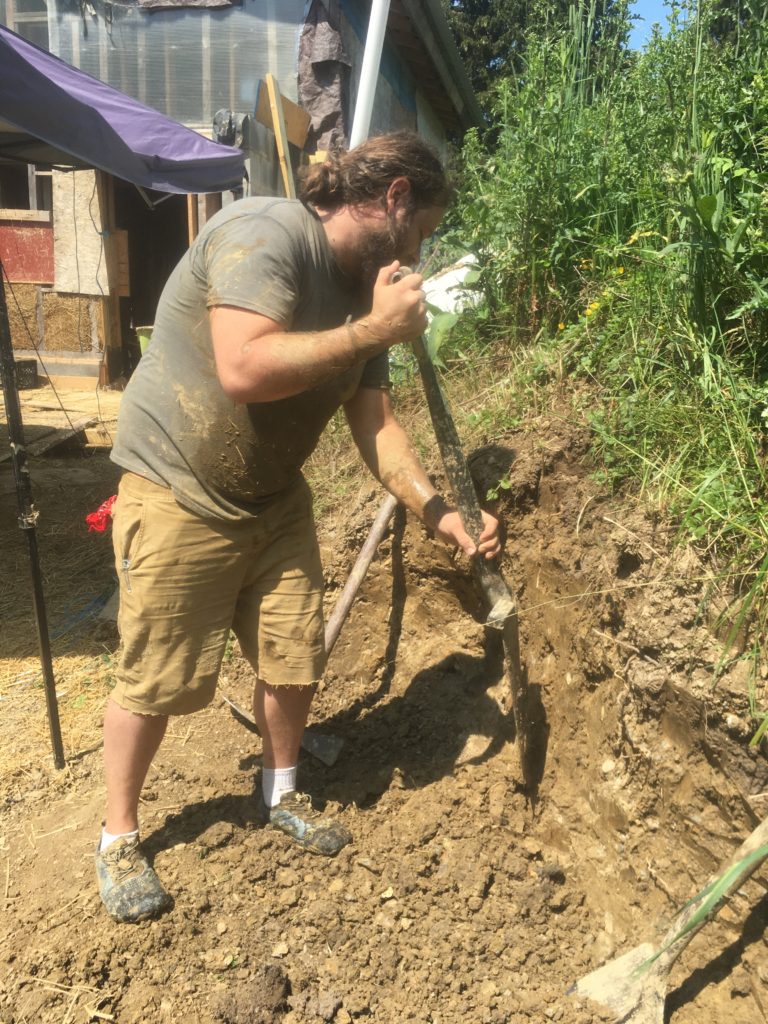
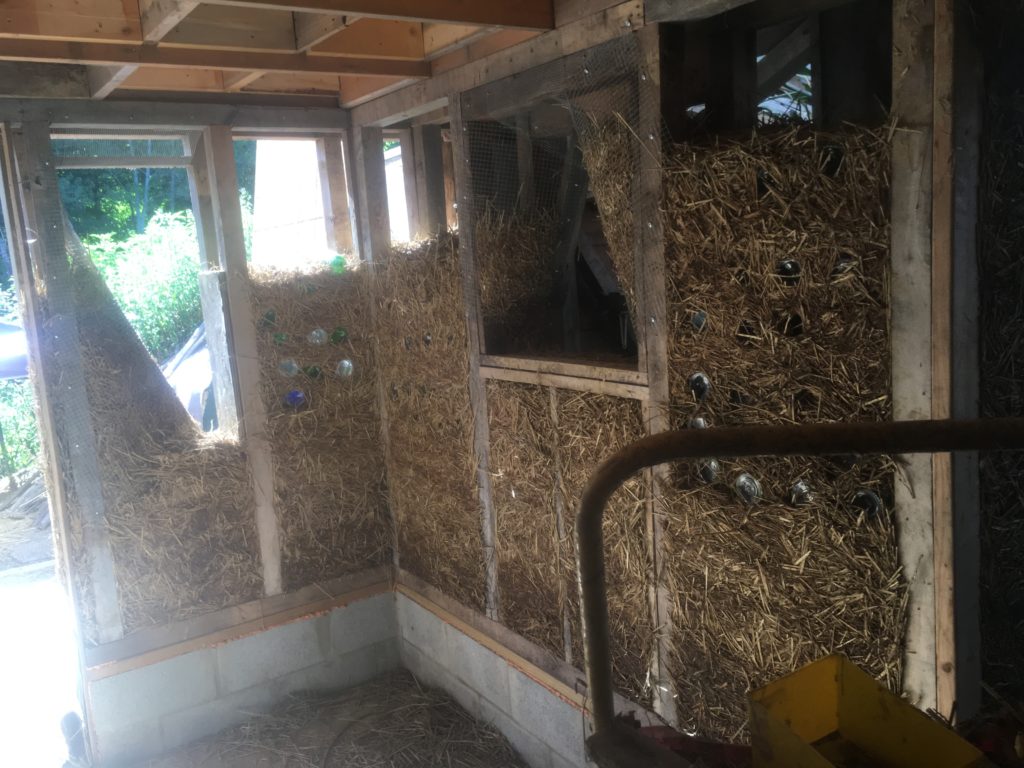


Follow Us!